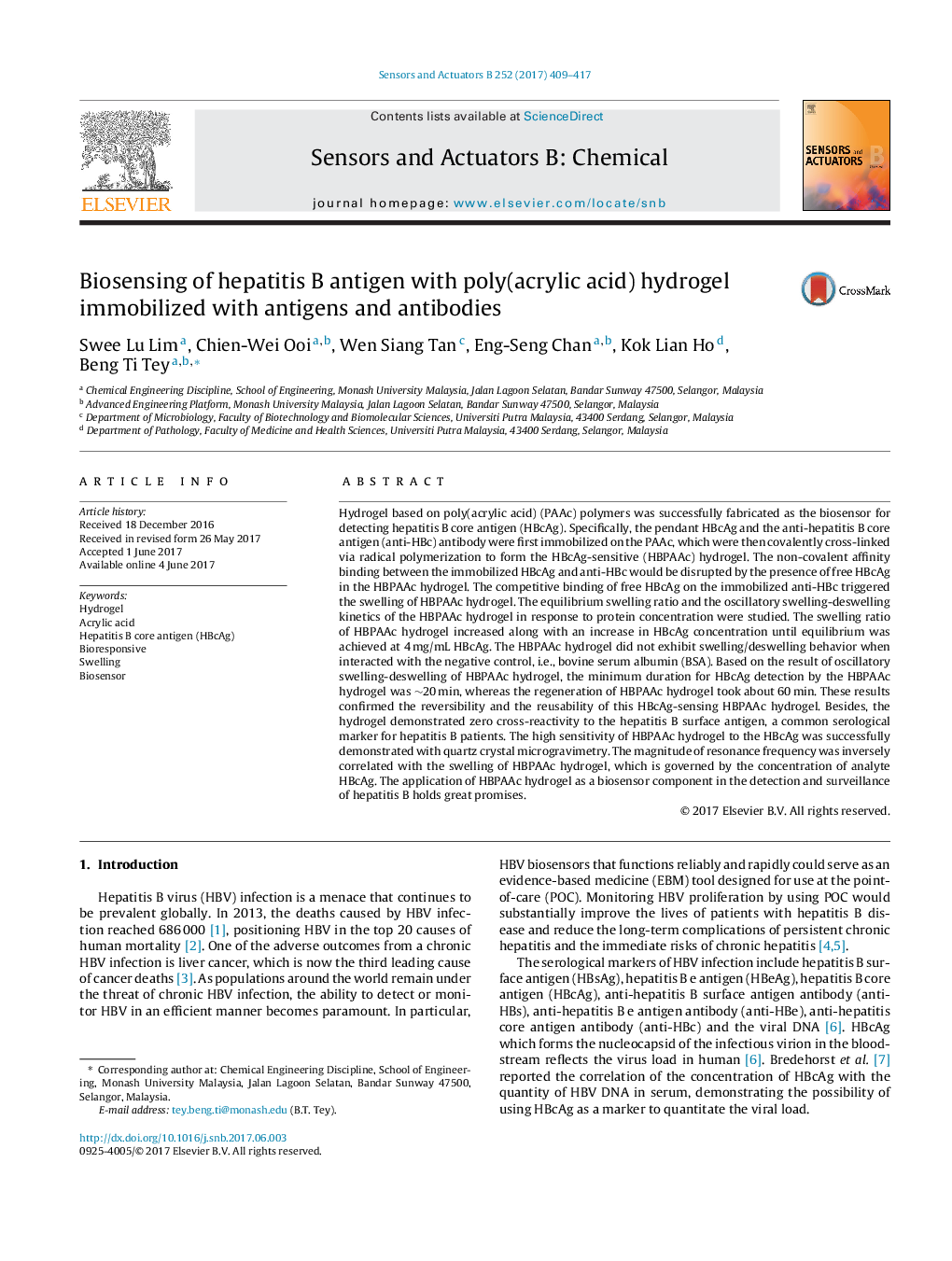| Article ID | Journal | Published Year | Pages | File Type |
|---|---|---|---|---|
| 5009090 | Sensors and Actuators B: Chemical | 2017 | 9 Pages |
â¢A poly(acrylic acid)-based hydrogel with hepatitis B core antigen (HBcAg)-sensing ability was prepared.â¢The mechanism relies on the swelling of hydrogel triggered by the competitive binding of HBcAg to its antibody (anti-HBc).â¢A specific detection of HBcAg up to 4 mg/mL.â¢The high sensitivity of hydrogel to HBcAg was demonstrated with quartz crystal microgravimetry.â¢The oscillatory swelling-deswelling of functionalized hydrogel proved its reusability in bio-sensing.
Hydrogel based on poly(acrylic acid) (PAAc) polymers was successfully fabricated as the biosensor for detecting hepatitis B core antigen (HBcAg). Specifically, the pendant HBcAg and the anti-hepatitis B core antigen (anti-HBc) antibody were first immobilized on the PAAc, which were then covalently cross-linked via radical polymerization to form the HBcAg-sensitive (HBPAAc) hydrogel. The non-covalent affinity binding between the immobilized HBcAg and anti-HBc would be disrupted by the presence of free HBcAg in the HBPAAc hydrogel. The competitive binding of free HBcAg on the immobilized anti-HBc triggered the swelling of HBPAAc hydrogel. The equilibrium swelling ratio and the oscillatory swelling-deswelling kinetics of the HBPAAc hydrogel in response to protein concentration were studied. The swelling ratio of HBPAAc hydrogel increased along with an increase in HBcAg concentration until equilibrium was achieved at 4Â mg/mL HBcAg. The HBPAAc hydrogel did not exhibit swelling/deswelling behavior when interacted with the negative control, i.e., bovine serum albumin (BSA). Based on the result of oscillatory swelling-deswelling of HBPAAc hydrogel, the minimum duration for HBcAg detection by the HBPAAc hydrogel was â¼20Â min, whereas the regeneration of HBPAAc hydrogel took about 60Â min. These results confirmed the reversibility and the reusability of this HBcAg-sensing HBPAAc hydrogel. Besides, the hydrogel demonstrated zero cross-reactivity to the hepatitis B surface antigen, a common serological marker for hepatitis B patients. The high sensitivity of HBPAAc hydrogel to the HBcAg was successfully demonstrated with quartz crystal microgravimetry. The magnitude of resonance frequency was inversely correlated with the swelling of HBPAAc hydrogel, which is governed by the concentration of analyte HBcAg. The application of HBPAAc hydrogel as a biosensor component in the detection and surveillance of hepatitis B holds great promises.
Graphical abstractDownload high-res image (86KB)Download full-size image
